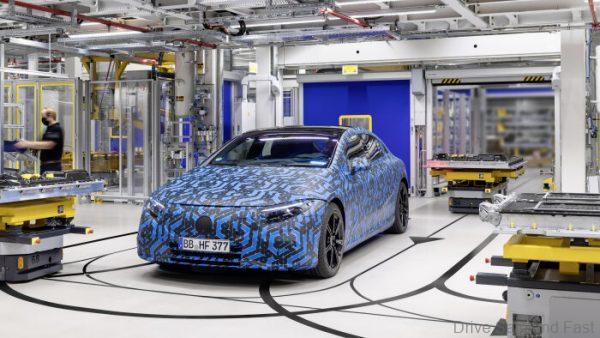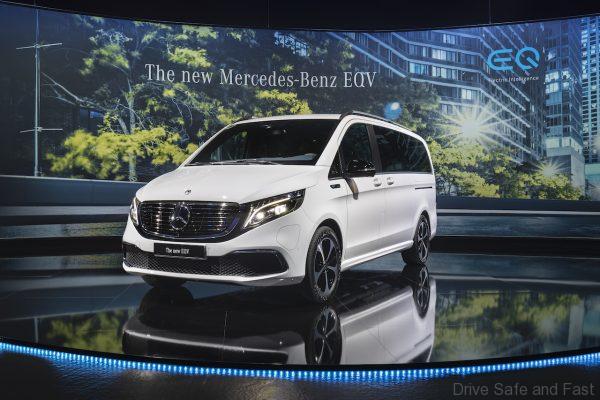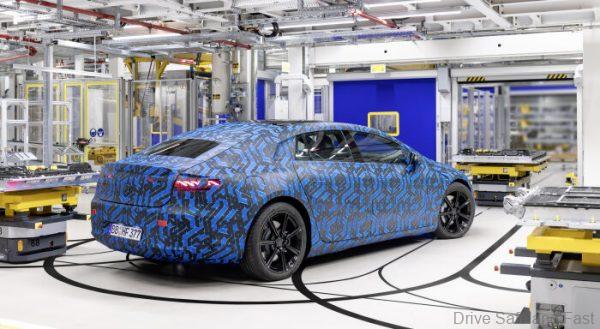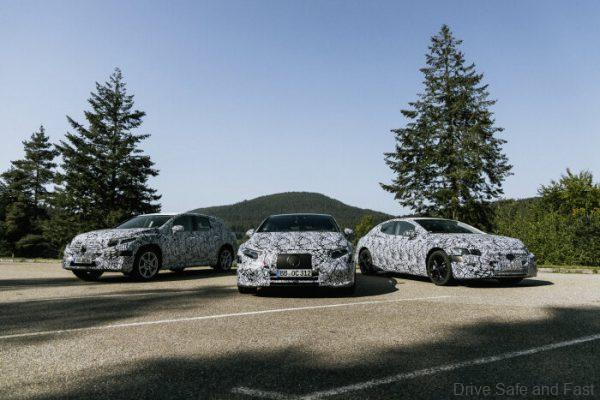Mercedes-Benz is ramping its electric portfolio up for a major offensive coming in the next 2 years. Right now, the company has just the EQC SUV and EQV passenger van that are fully electric. They do have some plug-in hybrid electric vehicles and many of their standard models are mild hybrids with 48V systems integrated for better fuel consumption and torque.

By the end of 2022 though, things will change. The company says they’ll have at least 8 all-electric cars under their Mercedes-EQ sub-brand. This includes the EQA, EQB, EQC, EQE, EQE SUV, EQS, EQS SUV and EQV. Here’s a brief idea of what those vehicles are, when they’re expected and where they’ll be built.

EQA – electric compact SUV, coming early 2021, made in Rastatt, Germany
EQB – electric compact 7-seater SUV, by 2021, made in Kecskemét, Hungary
EQC – electric SUV, launched in some markets, made in Bremen, Germany and Beijing, China
EQE – electric business sedan, coming by 2022, made in Bremen, Germany and Beijing, China
EQS – electric luxury sedan, coming by mid-2021, made in Sindelfingen, Germany
EQE SUV and EQS SUV – electric luxury SUVs, coming by 2022, made in Tuscaloosa, USA
EQV – electric people mover, launched in some markets, made in Vitoria, Spain

Right away I feel they’ve messed up that elegant nomenclature that took so long to perfect. Before the arrival of the ‘EQ’ sub-brand, Mercedes-Benz didn’t have to use ‘SUV’ as a suffix to describe a model as an SUV. Any model with ‘G’ or ‘GL’ was understood to be an SUV of some sort.
Now the EQE and EQS are both planned as sedans, with SUV variants being named EQE SUV and the EQS SUV. What’s worse is that the first product to come from the EQ brand was the EQC – an SUV. That’s right. They already have an SUV that doesn’t have “SUV” in its name…

Which also means there’s no room in this new nomenclature for Mercedes-Benz to come up with a sedan in this particular class unless they call it something else, which risks an entire nomenclature overhaul once again. That is, unless they call it EQC Sedan.

Here’s what Mercedes-Benz themselves have to say about this upcoming electrified product strategy.
PRESS RELEASE
Mercedes-Benz is targeting leadership in electric drives and vehicle software. The consistent electrification of the entire product portfolio is a key element of the strategic focus “Ambition 2039” and a prerequisite on the way to CO₂ neutrality. In 2022 the portfolio includes eight all-electric Mercedes-EQ models. The global Mercedes-Benz production network is ready for the company’s electric product offensive and is integrating its Mercedes-EQ models into series production in its existing plants.
The EQS, the first electric luxury sedan from Mercedes-Benz, will start in the first half of 2021 in Factory 56 at the Sindelfingen site (Germany). With the production launch of the electric compact SUV EQA at the Rastatt plant (Germany) and the current decision to locate EQB production in the Hungarian plant in Kecskemét, the company is taking further important steps toward making its product portfolio CO₂ neutral. The course has also been set toward “Electric First” in the global powertrain production network as well. High-efficiency battery systems will also be manufactured and assembled within the production network.
Mercedes-Benz vehicle plants consistently implement electric offensive
In May 2019 production of the EQC (combined power consumption: 21.5 kWh/100 km; combined CO₂ emissions: 0 g/km)1 at the Mercedes-Benz plant in Bremen (Germany) was integrated into ongoing series production. Just a few months later the German-Chinese production joint venture, Beijing Benz Automotive Co. Ltd. (BBAC), launched EQC production for the local market in China. In 2020 production of the EQV premium electric MPV (combined power consumption: 26.4 kWh/100 km; combined CO₂ emissions: 0 g/km)1 started in Vitoria, northern Spain.
Compact car class customers can look forward to two fully electric compact SUVs in the EQA and EQB in 2021. EQA will celebrate its world premiere on January, 20 2021 as the first fully electric derivative of this compact car. The EQA production launch at the Mercedes-Benz Rastatt plant went smoothly. As with the EQC from Bremen and Beijing and the EQV from Vitoria, which are already on the market, the fully electric models at the Rastatt plant run on the same production line as compact vehicles with conventional and hybrid drives. That means all five vehicles produced in Rastatt are electrified: In addition to the fully electric EQA, the A‑Class, A-Class sedan, B-Class and the compact SUV GLA are also produced at the Mercedes-Benz plant in Rastatt – with classic combustion engines as well as plug-in hybrid drive. With that the Mercedes-Benz Rastatt plant is making an important contribution on the road to a CO₂ neutral vehicle fleet and to the Mercedes-Benz AG electric offensive. EQA production will also follow next year (2021) at BBAC in Beijing for the Chinese market.
EQB production will launch in 2021 at two locations in the global Mercedes-Benz Cars production network: in the Hungarian Mercedes-Benz plant in Kecskemét for the world market and in the German-Chinese joint venture BBAC in Beijing for the local market. Plant preparation, including employee training and renovation work, is already underway. The compact SUV EQB will be the first purely electrically powered production vehicle from Hungary and will complement the plug-in hybrid portfolio consisting of the CLA and CLA Shooting Brake. The A-Class will also be produced in Kecskemét with a plug-in hybrid drive, in addition to production in the German Mercedes-Benz plant in Rastatt.
Furthermore, in the first half of 2021 production of the EQS electric luxury sedan will begin in Factory 56 at the Mercedes-Benz plant in Sindelfingen (Germany). EQS is the independent, fully electric member in the new S-Class program and is the first to use the new electric architecture for luxury and upper-class electric vehicles at Mercedes-Benz. In Factory 56 the S-Class and, in the future, the Mercedes-Maybach S-Class, and the EQS will be produced in a fully flexible manner on the same line. Factory 56 embodies the future of production at Mercedes-Benz and sets new standards for automobile construction. In Factory 56 efficiency gains of around 25 percent are achieved compared to the previous S-Class assembly. This is made possible by optimizing the entire value chain and full digitalization with MO360, the digital Mercedes-Benz production ecosystem. For further information on this: https://media.daimler.com/marsMediaSite/ko/en/47014243
Furthermore, the Mercedes-Benz plant in Bremen will begin production of the EQE business sedan in the second half of 2021, followed shortly thereafter at the Beijing plant. The EQE thus complements the all‑electric portfolio of the two plants. The Beijing plant will then produce a total of four Mercedes-EQ models for the local market.
The Mercedes-Benz plant in Tuscaloosa (USA) is also preparing for production of the EQE SUV and EQS SUV in 2022, which will be produced in the future on the same line with SUVs with conventional and plug-in hybrid drives.
In 2022 a total of eight Mercedes-EQ electric vehicles will be produced at seven locations on three continents. This is possible because the company made early investments worldwide in flexibility and technical equipment with future-oriented Industry 4.0 solutions. In the Mercedes-Benz AG plants, vehicles with different drive types can be produced in parallel thanks to highly flexible structures. With a view to the strategic goal of generating more than half of sales with so-called xEVs, i.e. plug-in hybrids and electric vehicles, from 2030 on and gradually increasing the purely electric share, the high degree of flexibility is a decisive advantage. It enables production to be adjusted at short notice depending on market demand.

